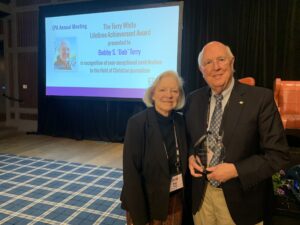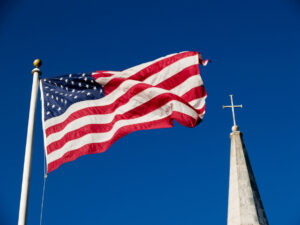
LITTLE ROCK, Ark. (BP)–On Sept. 23, 1957, nine black teenaged students — dubbed the Little Rock Nine — were secretly taken into Little Rock’s Central High School by police through a side door. For a few hours that day, racial integration took place.
The Southern Baptist Convention and the Arkansas State Baptist Convention have since publicly repented for actions and inaction that supported segregation during such junctures as the Central High crisis.
Pastors of prominent white congregations joined in statements commending Arkansas Gov. Orval E. Faubus’ use of National Guard troops to block the entrance to Central High and thwart the school board’s efforts to integrate the city’s schools. One such statement noted, “The laws of the state of Arkansas call for the separation of the races in the public schools of the state. It is the duty of the governor of the state to do his utmost to see that the laws of the state are enforced.”
On the other hand, in the Sept. 12, 1957, edition of the Arkansas Baptist, a group of white ministers in Little Rock publicly denounced Faubus. The group included pastor W.O. Vaught of Immanuel Baptist Church, Dale Cowling of Second Baptist Church; and Harold Hicks of Pulaski Heights Baptist Church.
“We, the undersigned ministers of Little Rock, strongly protest the action of Gov. Orval E. Faubus in calling out the armed forces of the state to surround Central High School, thereby preventing integration in compliance with the Supreme Court’s decision of May 1954 and the order of the Federal Court of August 1957,” one statement said.
Throughout this September, a wide variety of 50th anniversary commemorative events have been sponsored by governmental entities like the Little Rock School Board, the city of Little Rock and the University of Arkansas at Little Rock’s Bowen School of Law.
While Southern Baptist churches in Little Rock apparently made no plans to bring up the subject of racial reconciliation on Sept. 23, race relations among Baptist churches in Little Rock is a multi-layered issue. Both whites and blacks Baptists acknowledge that there is now an increasing sentiment that Sunday segregation among churches is not right, especially in a community like Little Rock where blacks and whites live, work and study together.
According to a resolution passed by unanimous voice vote of messengers to the Arkansas State Baptist Convention in 2002, Arkansas Baptists noted, “Artificial, arbitrary, capricious, and often hurtful boundaries continue to obstruct the unity of God’s people…. [D]ivisions based on considerations of ethnicity, nationality, and language impede our task of relating properly to others, identifying them as our neighbors, meeting their physical and spiritual needs, and ultimately helping them accept Christ as their Lord and Savior.”
The messengers commissioned a unity committee to study the issue and bring recommendations. In a 15-page report, the committee acknowledged the reality of racial disunity among Southern Baptist churches in Arkansas, described how it had come to be, provided reasons why Southern Baptists should seek multicultural congregations and set forth suggestions for achieving racial diversity. Messengers at the 2003 convention adopted the report.
One of W.O. Vaught’s successors at Immanuel Baptist Church was Rex M. Horne. Horne, currently the president of Ouachita Baptist University in Arkadelphia who served as the convention’s president for three years.
Horne said he sees relationships between blacks and whites serving in joint church ministries as having progressed and changed for the better over the past 50 years. The raw attitudes that were displayed by many white Baptists during the Central High crisis are no longer displayed in or tolerated by Baptist churches, he said.
“My sense of it is that we are in great shape,” Horne said. “I think there is great cooperation, there is willingness, we know each other better than before in years past.”
Horne said his heart has always been turned toward race relations. He and his wife consciously chose to put their four children through Central High. He led Immanuel to cooperate with predominantly black churches for pulpit exchanges, city prayerwalks, inner-city ministries and an annual sports banquet.
When it comes to worshipping together in integrated congregations, Horne’s observation is that blacks and whites are comfortable in churches composed predominantly of their own race. He said it is natural to congregate with people one grew up with, went to school with and live near.
Horne said he is not as troubled with what Christians do with one hour on Sunday morning as he is with how they act during the week.
“The real proof of our faith is not necessarily whom we are sitting by on our pews on Sunday morning,” Horne said. “Who we eat lunch with, who we are on the recreation fields with, who we might have fellowship with in our neighborhood, who our kids might call friends…. I do think there has been improvement in those areas over the years that we are talking about since the integration of Central High School. Certainly there are great strides.”
Quinton Moss, pastor of Little Rock’s Unity Bible Baptist Church, one of a small number of predominantly black churches associated with the Arkansas convention, served on the unity committee.
Moss agreed with Horne that progress has been made among Baptist churches regarding more accepting attitudes and mutual respect among blacks and whites.
However, Moss said there is still a long way to go for the type of unity described by Jesus in John 17:20-23.
“Perhaps it comes down to worship styles in many cases, but there are some deeper things that are going on,” Moss said. It is not unusual to see a small number of blacks as members of predominantly white churches, and sometimes vice versa, “but we have a tendency when we get two or three either way, that we are comfortable with that. But if there is a whole group that comes in, then, on both sides of the aisle, I think we are not comfortable.”
Moss said intentionality was the most important element for racial unity to come about in Southern Baptist churches.
“Even meeting together on a periodic basis, just getting to know each other rather than criticizing the styles,” Moss said. “Learning where a person is coming from and hearing the heart of those people and the Gospel message they are preaching, teaching or singing about.” Even so, he lamented, “We aren’t always willing to embrace that.”
–30–
Charlie Warren, editor of the Arkansas Baptist newsjournal, contributed to this article.















